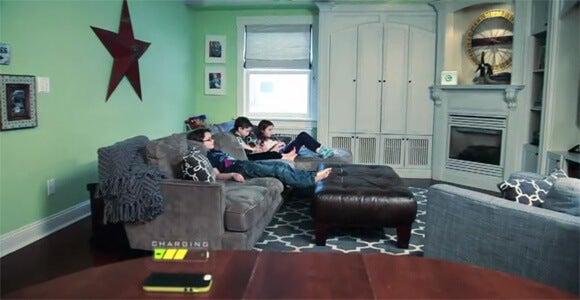Wireless Charging of Phones From Across the Room? The Tech Inches Closer
Wireless energy transmission has been possible since Thomas Edison’s time, and in the last several years, especially, with robots gaining mobility and electric vehicles building consumer demand, we’ve heard almost daily promises that the days of tangled power cords are numbered. So why do the vast majority of EV drivers and smartphone users, not to mention robots, remain tethered to plug-in chargers and cables?

Share
If you park an electric car over a metal plate or deposit a mobile phone on a charging mat, you can recharge the batteries, no plugs required. Wireless energy transmission has been possible since Thomas Edison’s time, and in the last several years, especially — as robots gain mobility and electric vehicles accrue consumer demand — we’ve heard regular promises that the days of tangled power cords are numbered.
So why do the vast majority of EV drivers and smartphone users, not to mention robots, remain tethered to plug-in chargers and cables? Because new, promising technology doesn’t win consumers over on its own; it has to be easier to use than the old methods. Currently, most wireless charging methods seem to trade the inconvenience of cables for the inconvenience of receiver plates and cases. It’s not much easier to set a phone in a charging plate overnight than it is to simply plug it in.
Before they take off, taking robots and EVs with them, wireless charging methods will have to be stop simply replacing one tether with another and/or get significantly faster than existing charging methods. None coming on to the market has the full complement of conveniences, but it’s clear that a number of companies are pushing against existing limits.
A handful of emerging wireless chargers can charge devices from several meters away. For instance, Energous, a public semiconductor company, is developing an energy router that powers several receivers up to 15 feet away. In a video, the company invites users to imagine receivers built into desks, tables and sofas. The receiver sleeves convert the radio waves sent by the router into direct current. With the phone in a receiver, which looks much like cases now for sale that extend battery life, a user can wander around and use the device as long as it remains within 15 feet of the router. One problem: In current prototypes, only about a fifth of the power that the system sucks from the wall ends up in the device being charged.
WiTricity is an MIT spinoff company that’s amassing an army of patents related to magnetic resonance charging, in which one magnetic coil sends electricity to another tuned to the same resonance. The setup, from a consumer perspective, is roughly the same: A wireless charging hub communicates with charging sleeves up to 15 feet away. But, unlike magnetic induction methods already in use, magnetic resonance charging works even if there’s a wood or granite wall between the hub and sleeve, and as much as 80 percent of the electricity taken from the outlet ends up in the devices. Repeaters would let the charge travel for much longer distances, giving this method a fighting chance of pulling the plug on plugs.
Be Part of the Future
Sign up to receive top stories about groundbreaking technologies and visionary thinkers from SingularityHub.


Both companies would like to see their receivers built into smartphones and other devices, but there’s a glitch: No one standard has emerged for wireless charging. In fact there are three. Two major industry groups that had been backing competing standards agreed earlier this year to make those standards interoperable; Qi, a third standard used by Samsung and LG, continues to go it on its own.
Other companies are focusing on the speed of charging. Charging a phone at the airport would be much less of a bother if you could do it in under a minute, right? Though it’s not yet wireless, StoreDot recently showed off a charger can power a phone in 30 seconds. The Israeli company, like Energous, has its roots in semiconductors, but its are unconventional: They rely on nanodots self-assembled from organic peptides.
Clearly, there are a lot of balls in the air when it comes to wireless charging. But with a few quick catches, the technology could be clear, at last, to realize its potential. And when it does, it won't just mean fewer cords tangled on nightstands: It will mean broader use of robots, a proliferation of electric vehicles, and whatever else innovation can dream up.
Photos: Energous, Wireless Power Consortium
Cameron received degrees in Comparative Literature from Princeton and Cornell universities. He has worked at Mother Jones, SFGate and IDG News Service and been published in California Lawyer and SF Weekly. He lives, predictably, in SF.
Related Articles

Hugging Face Says AI Models With Reasoning Use 30x More Energy on Average

How Scientists Are Growing Computers From Human Brain Cells—and Why They Want to Keep Doing It

These Brain Implants Are Smaller Than Cells and Can Be Injected Into Veins
What we’re reading


